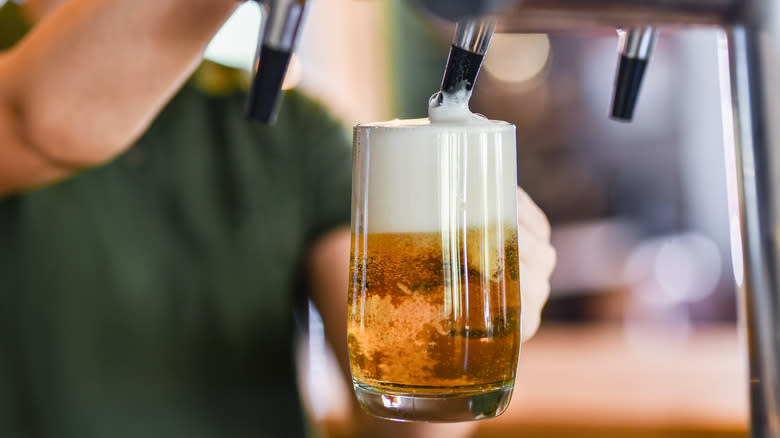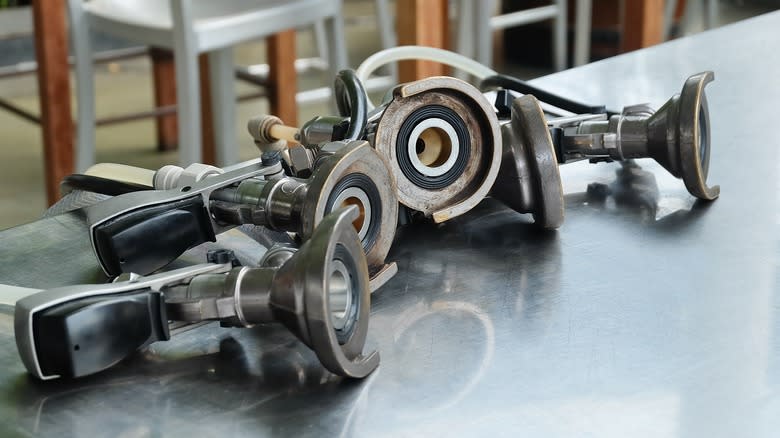Is It Worth Investing In A Kegerator? We Asked 2 Brewing Experts

Owning a beer kegerator is the great ambition of college kids and cool dads everywhere, but the price tag may leave you wondering if it's worth it. Mashed spoke with two brewing experts to get to the bottom of the barrel, so to speak.
This isn't a debate — both Jeff Tyler (co-owner and head brewer of Spice Trade Brewery + Kitchen) and Stephen Alexander (sales and marketing director at Tall City Brewing and board member for the Texas Craft Brewers Guild) endorse kegerator ownership. Alexander says it's "absolutely" worth investing in one for your home, with Tyler adding, "If you have the money and want to buy yourself a kegerator, go for it!" According to Alexander, the consumer-friendly kegs are both "environmentally-friendly [and] cost-effective," with a ½-barrel kegerator equaling 165 12-ounce bottles of beer; that's a pretty staggering amount of cash, material, and space in your fridge saved.
Both experts did, however, mention a couple of caveats. Alexander says that the usefulness of a kegerator "depends on how much beer you're drinking." Tyler echoes this, explaining that, even if you get a smaller size, "that's a lot of beer to drink in the average household before it starts to get old." If you only drink beer occasionally, then a kegerator probably isn't for you.
Read more: Popular Vodka Brands Ranked From Worst To Best
Kegerators Are A Big Commitment

Let's assume that you cook with beer a lot, have enough beer drinkers in your household to empty a kegerator over a weekend, or have a comically large kitchen that can fit all of the culinary gadgets your heart desires. There's still something to keep in mind before you click "Purchase" — your kegerator's maintenance.
According to Jeff Tyler, you'll have to "manage cleaning the draft lines every two weeks to prevent off flavors and bacterial build-up." Pediococcus and lactobacillus are two commonly-found bacteria in built-up tap lines, and while neither are considered human pathogens, they may make your beer taste like sour milk or vinegar. The best way around this is to follow Tyler's advice and look after your kegerator. Use an alkaline detergent cleaner to remove build-up, preferably with a beer line cleaning kit.
To get the best pint out of your kegerator, you'll need to maintain optimal pressure and temperature. Stephen Alexander suggests keeping pressure between 12 and 14 pounds if your kegerator uses CO2, "to maintain typical lagers' and ale-type beers' carbonation." The importance of temperature goes beyond keeping your drink cool — it affects your beer's head, too. If it's too warm, you'll end up with a lot of foam, but if it's too cold, it'll come out flat. "You want your kegerator to be sitting at a nice 38 degrees Fahrenheit," Alexander said.
Read the original article on Mashed

